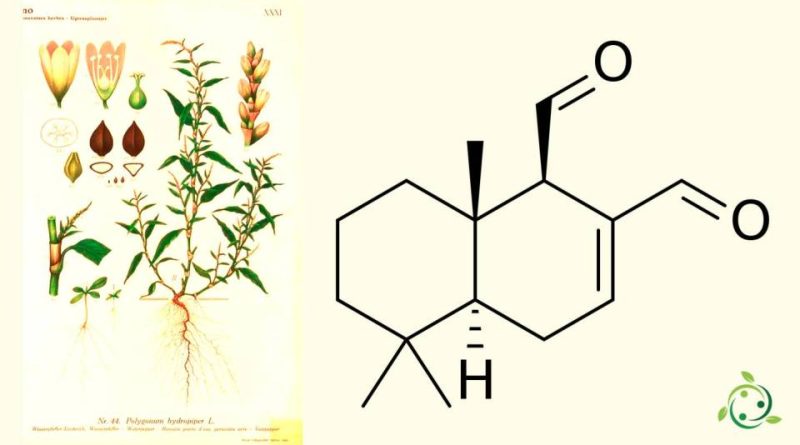Polygodial
Polygodial
The polygodial, whose term in the official IUPAC nomenclature is: (1R, 4aS, 8aS) -5,5,8a-trimethyl-1,4,4a, 5,6,7,8,8a-octahydronaphthalen-1,2- dicarbaldehyde is a natural substance found in some plants.
The polygodial has a brute or molecular formula: C15H22O2.
This substance is a bicyclic sesquiterpene which attracts TRPV1, the capsaicin receptor of chilli, of which it is however much less powerful and which causes a hot and pungent flavor in contact with the taste buds.
The polygodial is found in the Water pepper (Persicaria hydropiper (L.) Delabre 1800), in the pimiento de agua (Pseudowintera colored (Raoul) Dandy) and in other plants.
In the scientific literature it has been reported that the in vitro biological activity of the polygodial includes antifungal and antimicrobial activities, antihyperalgesia, some inhibitory microbiological activities, antifeedant activity against insects, antinociception, vasorelaxant action in the vessels (in rabbit guinea pigs), anti-inflammatory activity and antiallergic.
The primary antifungal action of polygodiale is linked to its property as a non-ionic surfactant, which interrupts the lipid-protein interface of integral proteins in a non-specific way, denaturing their functional conformation.
Polygodial is also likely to permeate passive diffusion across the plasma membrane and once inside cells can react with a variety of intracellular compounds.
Due to its antifeedant properties, the polygodial can be used as an insecticide against a series of insects.
Warning: The information shown is not medical advice and may not be accurate. The contents are for illustrative purposes only and do not replace medical advice.

